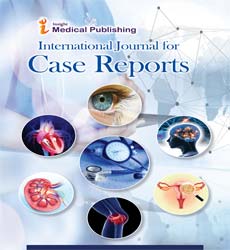Humeral Derotational Osteotomy Surgery
Gulay Gok*
Department of osteology, Turkey
Received Date: July 15, 2021; Accepted Date: October 18; Published Date: October 28, 2021
Citation: Gok G (2021) Humeral Derotational Osteotomy Surgery J Case Rep Vol. 5 No: 6.
Editorial
Omental torsion (OT) is an uncommon and occasional disease with a wide range of symptoms. When the larger omentum is twisted about its axis, it results in perfusion abnormalities and vascular impairment in the organ. An overweight 26-year-old Caucasian male presented with acute abdominal following a previous appendectomy, according to this case report. When the larger omentum is twisted around its axis, the organ suffers from perfusion problems and vascular damage. In the absence of fever, vomiting, or other symptoms, discomfort in the right iliac fossa is frequently the only symptom. The specific causes are unknown, however they could include congenital abnormalities, tumours, or past procedures. Odontomas, or benign odontogenic tumours of epithelial and mesenchymal origin, are very frequent and are now known as hamartomas Odontomes are almost always made up of enamel and dentin, with varying quantities of cementum and pulp. Compound and complex odontomas are the most common types of odontomas. The presence of all types of dental tissues, as well as an ordered distribution in the shape of tooth-like structures, characterise compound odontoma. Complex odontoma, on the other hand, is defined as an abnormality characterised by the presence of some or all dental tissues in an unorganised pattern. A case of compound-complex odontome in a 13-year-old girl is given here, along with the impaction of a mandibular second premolar. Dilaceration is an abrupt deviation along the tooth's long axis that can occur between the crown and root, or both. Because of their location within the aesthetic zone, such teeth present a unique difficulty to the physician. Following the elevation of the flap, a surgical extraction of the tooth was performed, and fixed orthodontic treatment to regain the needed amount of space was planned, followed by prosthetic rehabilitation utilising the same extracted tooth as the pontic. Osteopetrosis (OP) is a term used to describe a group of rare hereditary bone diseases. The osteoclast-poor form of osteopetrosis is much rarer in humans, accounting for only a small percentage of all cases of autosomal recessive osteopetrosis. It is characterised by a distinct increase in bone density and high bone fragility and presents with impaired bone remodelling due to defective osteoclastic activity. A 60-year-old woman complained of acute stomach pain and a bulge in her right upper abdomen when she went to the emergency room. A huge sensitive abdominal lump in the right hypochondrium, reaching up to the right lumbar area, was discovered on physical examination. The mass was parietal, not intra-abdominal, according to further inspection. External rotation in individuals with moderate to severe glenohumeral dysplasia is addressed with derotational humeral osteotomy surgery in brachial plexus injuries. Keloid scar, loss of external rotation due to bone remodelling, loss of internal rotation, prominence of osteosynthesis, and transient fracture distal to the plate are the most common problems recorded for this operation. In adults, giant intracranial aneurysms (ICGA) account for 3 to 5% of all intracranial aneurysms. They are arterial dilatations that are larger than 25 mm in diameter. Despite significant breakthroughs in endovascular procedures for treating big cerebral aneurysms, neurologists and interventional radiologists still face significant challenges in managing these vascular abnormalities.
Open Access Journals
- Aquaculture & Veterinary Science
- Chemistry & Chemical Sciences
- Clinical Sciences
- Engineering
- General Science
- Genetics & Molecular Biology
- Health Care & Nursing
- Immunology & Microbiology
- Materials Science
- Mathematics & Physics
- Medical Sciences
- Neurology & Psychiatry
- Oncology & Cancer Science
- Pharmaceutical Sciences
